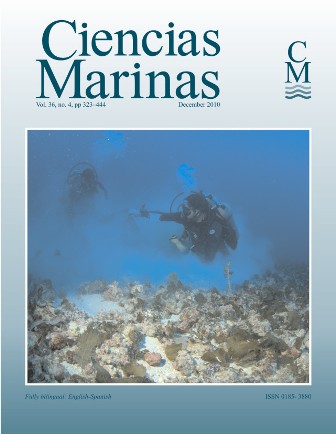Artisanal fisheries in La Paz Bay and adjacent oceanic area (Gulf of California, Mexico)
Main Article Content
Abstract
We analyzed the artisanal fishery capture data for La Paz Bay (Baja California Sur, Mexico) from 1998 to 2005. Capture data were related to the reproductive cycle of each species. Complete fishing records for 18 species of commercial importance belonging to eight families were identified. The most frequently captured species in La Paz Bay was the Pacific red snapper Lutjanus peru, with 43% of the total capture. This species was followed in importance by the spotted rose snapper Lutjanus guttatus, other groupers (Serranidae), and the jacks (Carangidae), with 18.8%, 15%, and 7.3% of the capture, respectively. Other commercial species captured in smaller amounts included the yellowfin tuna Thunnus albacares, the California flounder (or California halibut) Paralichthys californicus, the flathead mullet Mugil cephalus, the goliath grouper Epinephelus itajara, and different species of mojarra (Gerreidae). With few exceptions, catches outside the bay were higher than in the inner bay. All species were caught throughout the year regardless of their reproductive season. We recommend the implementation of fishery regulations for La Paz Bay, especially in the case of the Pacific red snapper, since it is the most exploited. Currently, overexploitation and possible local shortage of species may occur at any time and without warning in the near future. Aside from fishery management, an attractive option for increasing the supply of marine resources in the area is to use the inner bay for marine fish farming.
Downloads
Article Details
This is an open access article distributed under a Creative Commons Attribution 4.0 License, which allows you to share and adapt the work, as long as you give appropriate credit to the original author(s) and the source, provide a link to the Creative Commons license, and indicate if changes were made. Figures, tables and other elements in the article are included in the article’s CC BY 4.0 license, unless otherwise indicated. The journal title is protected by copyrights and not subject to this license. Full license deed can be viewed here.

